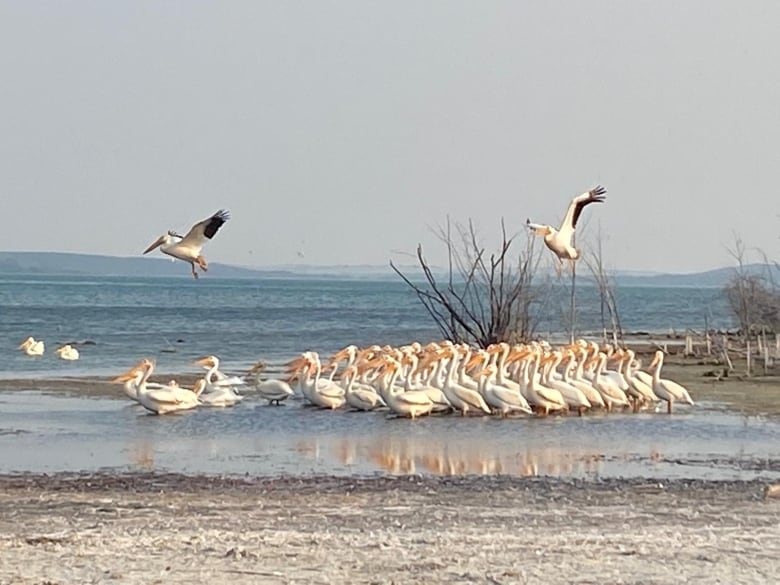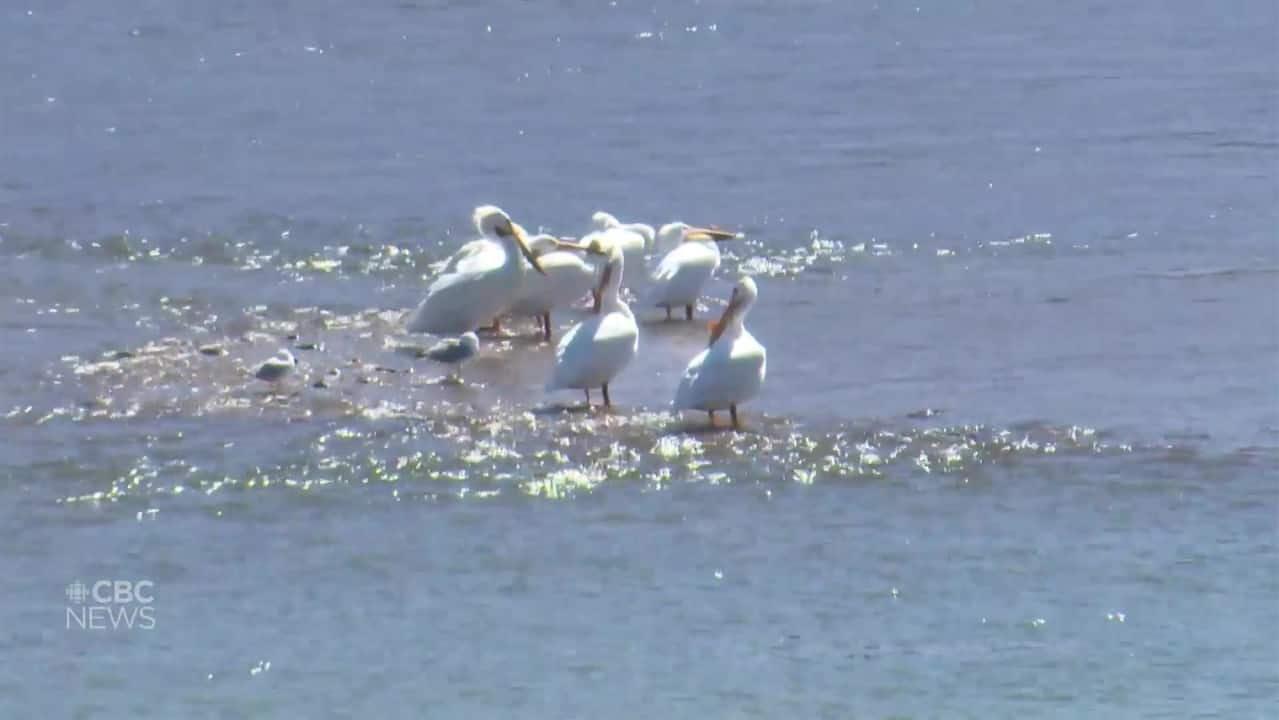By mid-March, Saskatchewanians get desperate for signs that winter is near its end.
There are the usual staples: the first person brave enough to wear shorts, filthy cars and the announcements of lineups for summer events like the SaskTel Saskatchewan Jazz Festival.
But it doesn’t feel like winter is truly over until the pelicans arrive.
“They’re beautiful, but there is that feeling of relief,” said Renny Grilz with Saskatoon’s Meewasin Valley Authority.
Grilz said pelicans flock to the first open bodies of water on their journey north, including the Rafferty-Alameda dam near Estevan, the Gardiner dam on Diefenbaker Lake and the weir on the South Saskatchewan River in Saskatoon.
“It’s the feeling of, OK, we’re done. We’re done with winter. Here are the pellys,” said Natalia Slipak with Salthaven Wildlife Rescue in Regina. “I look forward to the minute of just seeing them.”
14:13Do the same pelicans come back year after year?
When the pelicans come back to Saskatchewan we know winter is finally over. Peek into the fascinating lives of pelicans with this podcast. But don’t get too close. Their demeanour will surprise you.
Many Saskatchewanians find themselves fascinated by one of the world’s largest flying birds.
A pelican’s beak can hold around 12 litres. Its wingspan reaches the height of a basketball net.
“They have very expressive eyes,” said Slipak. “They’re just funny — how they walk, how they act.”
Sloan and Saoirse Lawlor, ages 7 and 6, asked the CBC podcast Good Question, Saskatchewan for more info about the bird.
“What kind of fish do they eat? Do the same pelicans come back every year?” they asked.

Grilz provided some answers.
“Their main diet is actually salamanders, crayfish, maybe some carp species and minnows as well,” said Grilz.
Pelicans travel north to Saskatchewan each spring to feed and nest.
The UNESCO Redberry Lake Biosphere Region, an hour north of Saskatoon, is a popular spot for one colony of pelicans to lay eggs and raise their young.
“There’s four islands on the lake and they like to nest where they are not disturbed by animals,” said John Kindrachuk, executive director of the Biosphere.
As for their return to the province year after year, John Kindrachuk said it’s likely the same family of pelicans that returns, but it’s hard to know for sure.
Like many, Salthaven West clinic manager Natalia Slipak sees the return of the American white pelican to Saskatchewan waters as a harbinger of spring. Slipak tells CBC’s Good Question Saskatchewan podcast host Leisha Grebinski what she loves about the giant white bird.
Experts said pelicans are a difficult bird to tag and track because of their size and their stench.
“Some of the smell on those nesting colonies is pretty horrendous, because they have all the dead fish and salamanders in there. So it can get pretty putrid,” said Grilz.
“They’re not the prettiest baby bird, but they get pretty graceful once they grow up,” said Kindrachuk.
That doesn’t change the minds of Sloan and Saorise, who said the birds are “magnificent.” They plan to stay on “pelican watch” until the first birds arrive in Saskatoon.
They are not the only ones.
“I’m so happy and so grateful to be in a province that has them,” said Slipak. “They’re one of my favourite birds.”





